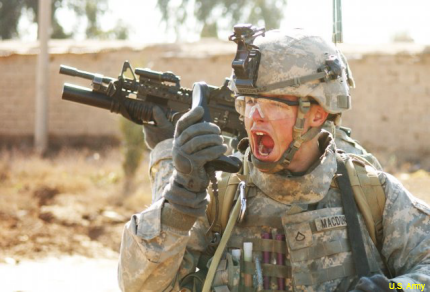Future soldiers could be part of the Internet of Things
The recent Mad Scientist Conference addressed the idea of embedding sensors into humans to help produce "sentient" data.

Sensors embedded in soldiers could produce ‘sentient’ data to inform operations on the battlefield.
Soldiers of the future might have a close, personal relationship with the Internet of Things because they could essentially be part of it, contributing to “sentient” data shared among a variety of sensors.
At least, that’s one possibility that came up during the recent 2015 Mad Scientist Conference at Georgetown University, Thomas Greco, director of intelligence for the Army Training and Doctrine Command, said during a media roundtable April 30. TRADOC sponsored the conference, which focused on ways to maintain the Army’s technological edge from 2025 to 2040.
A scientist at the conference suggested that people could be implanted with sensors that communicate with other sensors—both in other people or separate systems, Greco said, according to an Army news release. In the case of soldiers, that data could provide information such as situational awareness or mission details, allowing soldiers to “conduct certain functions without having to make a conscious interaction into that loop," he said.
The idea of sentience comes into play because the data, which could have its own operating system, would persistently report where it is and what it’s doing, would know not to communicate with an unfriendly system, and know the right amount of information to provide to soldiers, said Gary Phillips, senior intelligence advisor for TRADOC’s Intelligence Support Activity. Data with its own operating system would be a major shift from the way software is produced today, but it could solve the problem of too much data being delivered at a time, while reducing system crashes and simplifying things for soldiers.
Ultimately, Greco said, combining sensors in humans with a network of other sensors could help eliminate ambiguity in the battlefield, providing "precision in knowing the Internet of Things," and better protecting soldiers and their tactical networks.
NEXT STORY: Air Force, NASA test jet with 'morphing' wings



